publications
All publications
2024
-
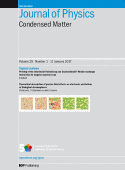 Metal-bonded perovskite lead hydride with phonon-mediated superconductivity exceeding 46 K under ambient pressureYong He, Juan Du*, Shi-ming Liu, Chong Tian, Min Zhang, Yao-hui Zhu, Hong-xia Zhong, Xinqiang Wang, and Jun-jie Shi*J. Phys.: Condens. Matter, Feb 2024
Metal-bonded perovskite lead hydride with phonon-mediated superconductivity exceeding 46 K under ambient pressureYong He, Juan Du*, Shi-ming Liu, Chong Tian, Min Zhang, Yao-hui Zhu, Hong-xia Zhong, Xinqiang Wang, and Jun-jie Shi*J. Phys.: Condens. Matter, Feb 2024In the search for high-temperature superconductivity in hydrides, a plethora of multi-hydrogen superconductors have been theoretically predicted, and some have been synthesized experimentally under ultrahigh pressures of several hundred GPa. However, the impracticality of these high-pressure methods has been a persistent issue. In response, we propose a new approach to achieve high-temperature superconductivity under ambient pressure by implanting hydrogen into lead to create a stable few-hydrogen binary perovskite, Pb4H. This approach diverges from the popular design methodology of multi-hydrogen covalent high critical temperature (Tc) superconductors under ultrahigh pressure. By solving the anisotropic Migdal–Eliashberg equations, we demonstrate that perovskite Pb4H presents a phonon-mediated superconductivity exceeding 46 K with inclusion of spin–orbit coupling, which is six times higher than that of bulk Pb (7.22 K) and comparable to that of MgB2, the highest Tc achieved experimentally at ambient pressure under the Bardeen, Cooper, and Schrieffer framework. The high Tc can be attributed to the strong electron–phonon coupling strength of 2.45, which arises from hydrogen implantation in lead that induces several high-frequency optical phonon modes with a relatively large phonon linewidth resulting from H atom vibration. The metallic-bonding in perovskite Pb4H not only improves the structural stability but also guarantees better ductility than the widely investigated multi-hydrogen, iron-based and cuprate superconductors. These results suggest that there is potential for the exploration of new high-temperature superconductors under ambient pressure and may reignite interest in their experimental synthesis in the near future.
@article{He_2024, dimensions = {true}, doi = {10.1088/1361-648X/ad2806}, url = {https://dx.doi.org/10.1088/1361-648X/ad2806}, year = {2024}, month = feb, publisher = {IOP Publishing}, volume = {36}, number = {20}, pages = {205502}, author = {<b>He</b>, <b>Yong</b> and Du<sup>*</sup>, Juan and Liu, Shi-ming and Tian, Chong and Zhang, Min and Zhu, Yao-hui and Zhong, Hong-xia and Wang, Xinqiang and Shi<sup>*</sup>, Jun-jie}, title = {Metal-bonded perovskite lead hydride with phonon-mediated superconductivity exceeding 46 K under ambient pressure}, journal = {J. Phys.: Condens. Matter}, }
2023
-
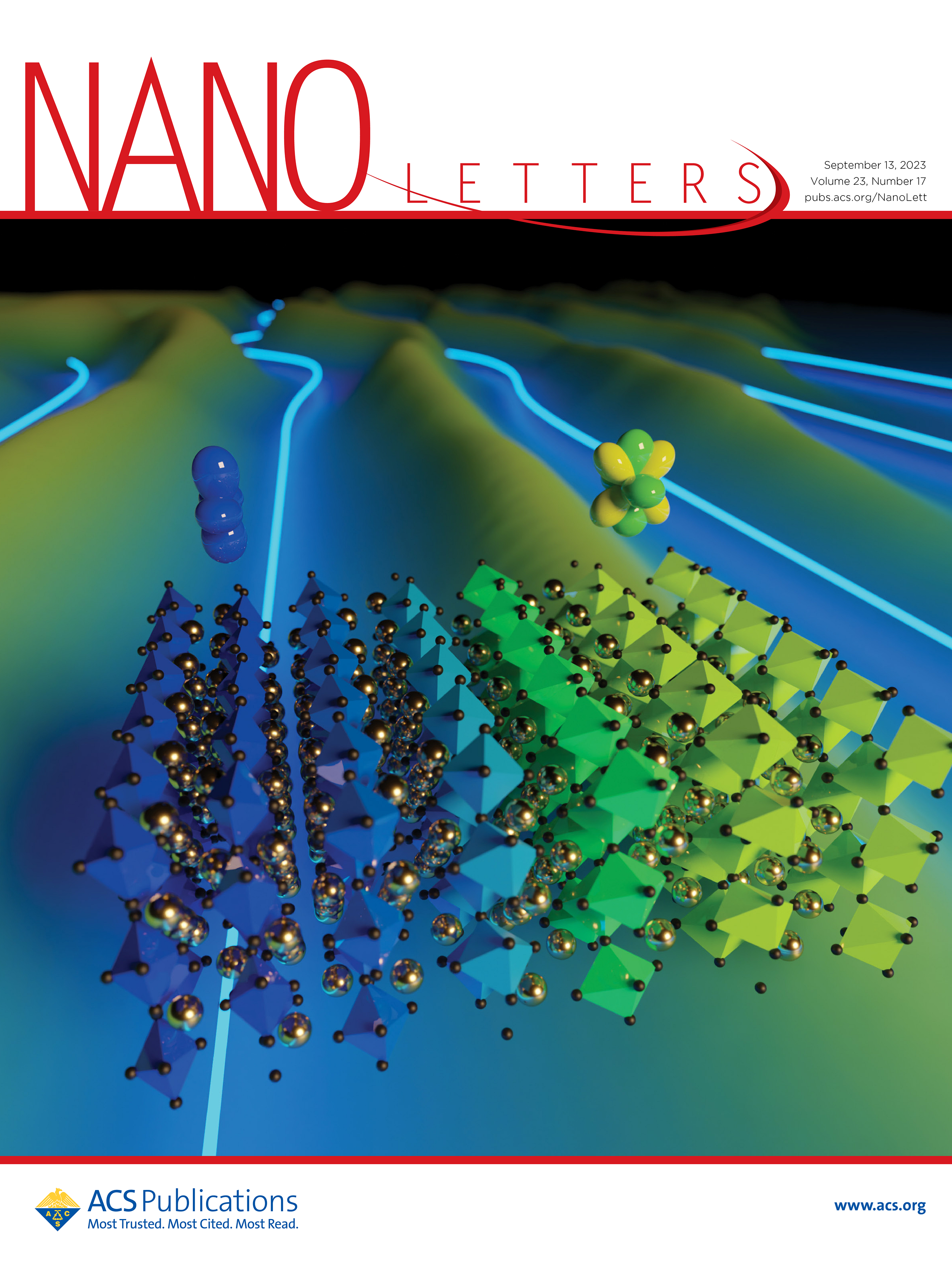 Few-Hydrogen High-Tc Superconductivity in (Be4)2H Nanosuperlattice with Promising Ductility under Ambient PressureYong He, and Jun-jie Shi*Nano Lett., Aug 2023PMID: 37602837
Few-Hydrogen High-Tc Superconductivity in (Be4)2H Nanosuperlattice with Promising Ductility under Ambient PressureYong He, and Jun-jie Shi*Nano Lett., Aug 2023PMID: 37602837The multi-hydrogen lanthanum hydride LaH10 is well recognized as having the highest critical temperature (Tc) of 250–260 K under unrealistically ultrahigh pressures of about 170–200 GPa. Here, we propose a novel idea for designing a new ambient-pressure high-Tc superconductor by inserting a hexagonal H-monolayer into two close-packed Be monolayers to form a new and stable few-hydrogen metal-bonded layered beryllium hydride (Be4)2H nanosuperlattice, with better ductility than multi-hydrogen, cuprate, and iron-based superconductors, completely contrary to the conventional design strategy for multi-hydrogen covalent high-Tc superconductors with poor ductility at several hundred GPa. We find that (Be4)2H is a phonon-mediated Eliashberg superconductor with a large electron–phonon coupling constant of 1.41 and a high Tc of 84–72 K with Coulomb repulsion pseudopotential μ* = 0.07–0.13. Importantly, (Be4)2H is the only new high-Tc superconductor and fills the gap in the absence of ambient-pressure superconductors around the liquid-nitrogen temperature with good ductility, which is highly beneficial for practical applications.
@article{doi:10.1021/acs.nanolett.3c02213, dimensions = {true}, author = {<b>He</b>, <b>Yong</b> and Shi<sup>*</sup>, Jun-jie}, title = {Few-Hydrogen High-<i>T<sub>c</sub></i> Superconductivity in (Be<sub>4</sub>)<sub>2</sub>H Nanosuperlattice with Promising Ductility under Ambient Pressure}, journal = {Nano Lett.}, volume = {0}, number = {0}, pages = {null}, year = {2023}, month = aug, doi = {10.1021/acs.nanolett.3c02213}, note = {PMID: 37602837}, url = {https://doi.org/10.1021/acs.nanolett.3c02213}, eprint = {https://doi.org/10.1021/acs.nanolett.3c02213}, } -
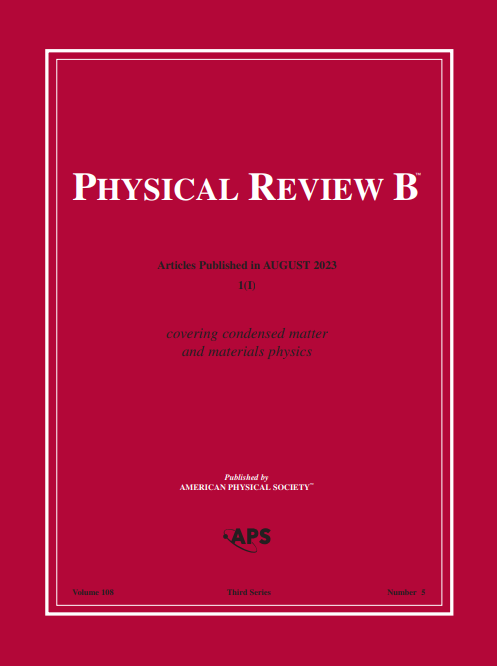 Phonon-mediated superconductivity in the metal-bonded perovskite Al4H up to 54 K under ambient pressureYong He, Jing Lu, Xinqiang Wang, and Jun-jie Shi*Phys. Rev. B, Aug 2023
Phonon-mediated superconductivity in the metal-bonded perovskite Al4H up to 54 K under ambient pressureYong He, Jing Lu, Xinqiang Wang, and Jun-jie Shi*Phys. Rev. B, Aug 2023Multi-hydrogen lanthanum hydrides have shown the highest critical temperature Tc at 250-260 K under 170-200 GPa. However, such high pressure is a great challenge for sample preparation and practical application. To address this challenge, we propose a novel design strategy for ambient-pressure superconductors by constructing new few-hydrogen metal-bonded perovskite hydrides, such as Al-based superconductor Al4H, with better ductility than the well-known multi-hydrogen, cuprate and Fe-based superconductors. Based on the Migdal-Eliashberg theory, we predict that the structurally stable Al4H has a favorable Tc of up to 54 K under atmospheric pressure.
@article{PhysRevB.108.054515, dimensions = {true}, title = {Phonon-mediated superconductivity in the metal-bonded perovskite Al<sub>4</sub>H up to 54 K under ambient pressure}, author = {<b>He</b>, <b>Yong</b> and Lu, Jing and Wang, Xinqiang and Shi<sup>*</sup>, Jun-jie}, journal = {Phys. Rev. B}, volume = {108}, issue = {5}, pages = {054515}, numpages = {8}, year = {2023}, month = aug, publisher = {American Physical Society}, doi = {10.1103/PhysRevB.108.054515}, url = {https://link.aps.org/doi/10.1103/PhysRevB.108.054515}, } -
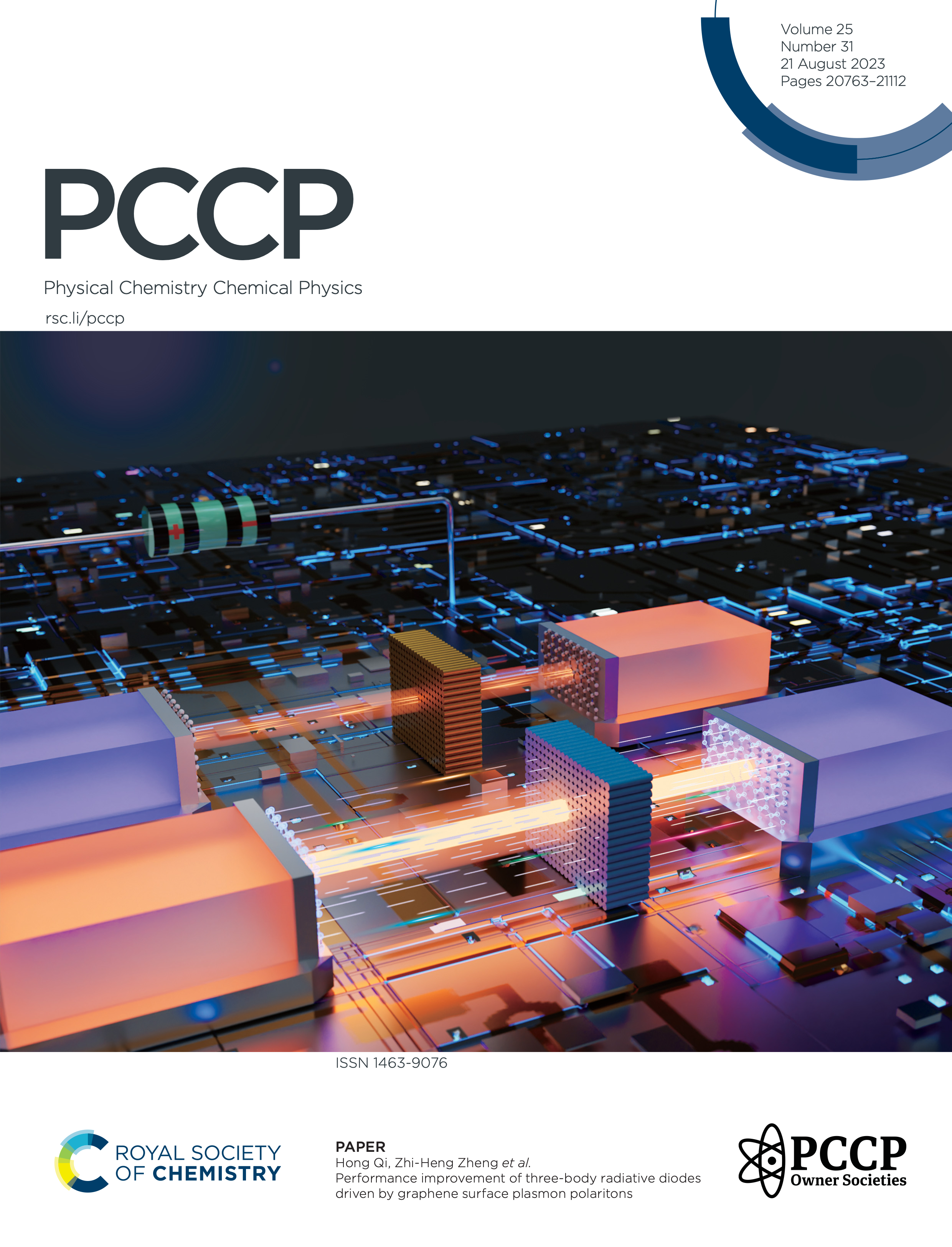 Enhancement for phonon-mediated superconductivity up to 37 K in few-hydrogen metal-bonded layered magnesium hydride under atmospheric pressureYong He, Juan Du*, Shi-ming Liu, Chong Tian, Min Zhang, Yao-hui Zhu, Hongxia Zhong, Xinqiang Wang, and Jun-jie Shi*Phys. Chem. Chem. Phys., Aug 2023
Enhancement for phonon-mediated superconductivity up to 37 K in few-hydrogen metal-bonded layered magnesium hydride under atmospheric pressureYong He, Juan Du*, Shi-ming Liu, Chong Tian, Min Zhang, Yao-hui Zhu, Hongxia Zhong, Xinqiang Wang, and Jun-jie Shi*Phys. Chem. Chem. Phys., Aug 2023The discovery of superconductivity in layered MgB2 has renewed interest in the search for high-temperature conventional superconductors, leading to the synthesis of numerous hydrogen-dominated materials with high critical temperatures (Tc) under high pressures. However, achieving a high-Tc superconductor under ambient pressure remains a challenging goal. In this study, we propose a novel approach to realize a high-temperature superconductor under ambient pressure by introducing a hexagonal H monolayer into the hexagonal close-packed magnesium lattice, resulting in a new and stable few-hydrogen metal-bonded layered magnesium hydride (Mg4)2H1. This compound exhibits superior ductility compared to multi-hydrogen, cuprate, and iron-based superconductors due to its metallic bonding. Our unconventional strategy diverges from the conventional design principles used in hydrogen-dominated covalent high-temperature superconductors. Using anisotropic Migdal–Eliashberg equations, we demonstrate that the stable (Mg4)2H1 compound is a typical phonon-mediated superconductor, characterized by strong electron–phonon coupling and an excellent Tc of 37 K under ambient conditions, comparable to that of MgB2. Our findings not only present a new pathway for exploring high-temperature superconductors but also provide valuable insights for future experimental synthesis endeavors.
@article{D3CP02620E, dimensions = {true}, title = {Enhancement for phonon-mediated superconductivity up to 37 K in few-hydrogen metal-bonded layered magnesium hydride under atmospheric pressure}, author = {<b>He</b>, <b>Yong</b> and Du<sup>*</sup>, Juan and Liu, Shi-ming and Tian, Chong and Zhang, Min and Zhu, Yao-hui and Zhong, Hongxia and Wang, Xinqiang and Shi<sup>*</sup>, Jun-jie}, journal = {Phys. Chem. Chem. Phys.}, year = {2023}, volume = {25}, issue = {31}, pages = {21037-21044}, publisher = {The Royal Society of Chemistry}, doi = {10.1039/D3CP02620E}, url = {http://dx.doi.org/10.1039/D3CP02620E}, } - Acta Mater.Anomalous high ZT above 2.2 in light element dominated compound Li4OTe due to low thermal conductivityShi-ming Liu, Hong-xia Zhong*, Yao-hui Zhu, Wen-hui Guo, He Yong, Chong Tian, Xinqiang Wang, and Jun-jie Shi*Acta Mater., Aug 2023
Thermoelectric materials usually contain heavy metal elements to ensure low lattice thermal conductivity κl. However, such elements like Pb, Bi and Sb have the expenses of high prices and potential risks of pollution. Herein, we propose a novel design strategy for thermoelectrics by constructing new light element dominated materials, such as quasi-antifluorite Li4OTe, with a high figure of merit surpassing 2.2. The introduction of O atom in Li4OTe crystal causes optical phonon softening and large phase space for three-phonon scattering processes, leading to much lower κl (<1 W m−1 K−1) than antifluorite Li2X (X=O, Te). This picture can be extended to other quasi-antifluorites, which will stimulate intense interests in the exploration of the light element dominated compounds, as new environmentally friendly and low-cost thermoelectric materials.
@article{LIU2023119045, dimensions = {true}, title = {Anomalous high <i>ZT</i> above 2.2 in light element dominated compound Li<sub>4</sub>OTe due to low thermal conductivity}, journal = {Acta Mater.}, volume = {255}, pages = {119045}, year = {2023}, issn = {1359-6454}, doi = {https://doi.org/10.1016/j.actamat.2023.119045}, url = {https://www.sciencedirect.com/science/article/pii/S1359645423003762}, author = {Liu, Shi-ming and Zhong<sup>*</sup>, Hong-xia and Zhu, Yao-hui and Guo, Wen-hui and <b>Yong</b>, <b>He</b> and Tian, Chong and Wang, Xinqiang and Shi<sup>*</sup>, Jun-jie}, keywords = {Thermoelectric materials, Lattice thermal conductivity, Figure of merit, Soft optical phonon, First-principles calculations} } - Phys. Rev. BSignificant reduction of the lattice thermal conductivity in antifluorites via a split-anion approachShi-ming Liu, Jun-jie Shi*, Yao-hui Zhu, Wen-hui Guo, Yong He, Chong Tian, Xinqiang Wang, and Hong-xia Zhong*Phys. Rev. B, May 2023
Searching for thermoelectrics with low lattice thermal conductivity \ensuremathκ_l is crucial to address needs for waste heat recovery, but few light element dominated materials provide a low \ensuremathκ_l. Herein, we propose an effective strategy, i.e., a split-anion approach, to reduce the \ensuremathκ_l of the antifluorite. After introducing the split-anion approach, the stable quasiantifluorite \mathrmLi_4\mathrmOSe is obtained, and \ensuremathκ_l is reduced by \ensuremath∼90% compared to the antifluorite \mathrmLi_2\mathrmSe. The \ensuremathκ_l value of \mathrmLi_4\mathrmOSe reaches as low as 0.49–1.75 W \mathrmm^\ensuremath-1\phantom\rule4pt0ex\mathrmK^\ensuremath-1, the range of thermoelectric applications, despite numerous light Li atoms and a large mass mismatch among the constituent atoms. This significant reduction of the thermal conductivity mainly results from the soft phonon branches and large optical bandwidth induced by lattice symmetry breaking after the split-anion approach. These findings offer ample scope for tuning the phonon band structure and thermal transport by reducing lattice symmetry like in the split-anion approach, leading to ultralow \ensuremathκ_l$ of materials.
@article{PhysRevB.107.205206, dimensions = {true}, title = {Significant reduction of the lattice thermal conductivity in antifluorites via a split-anion approach}, author = {Liu, Shi-ming and Shi<sup>*</sup>, Jun-jie and Zhu, Yao-hui and Guo, Wen-hui and <b>He</b>, <b>Yong</b> and Tian, Chong and Wang, Xinqiang and Zhong<sup>*</sup>, Hong-xia}, journal = {Phys. Rev. B}, volume = {107}, issue = {20}, pages = {205206}, numpages = {7}, year = {2023}, month = may, publisher = {American Physical Society}, doi = {10.1103/PhysRevB.107.205206}, url = {https://link.aps.org/doi/10.1103/PhysRevB.107.205206}, }
2022
-
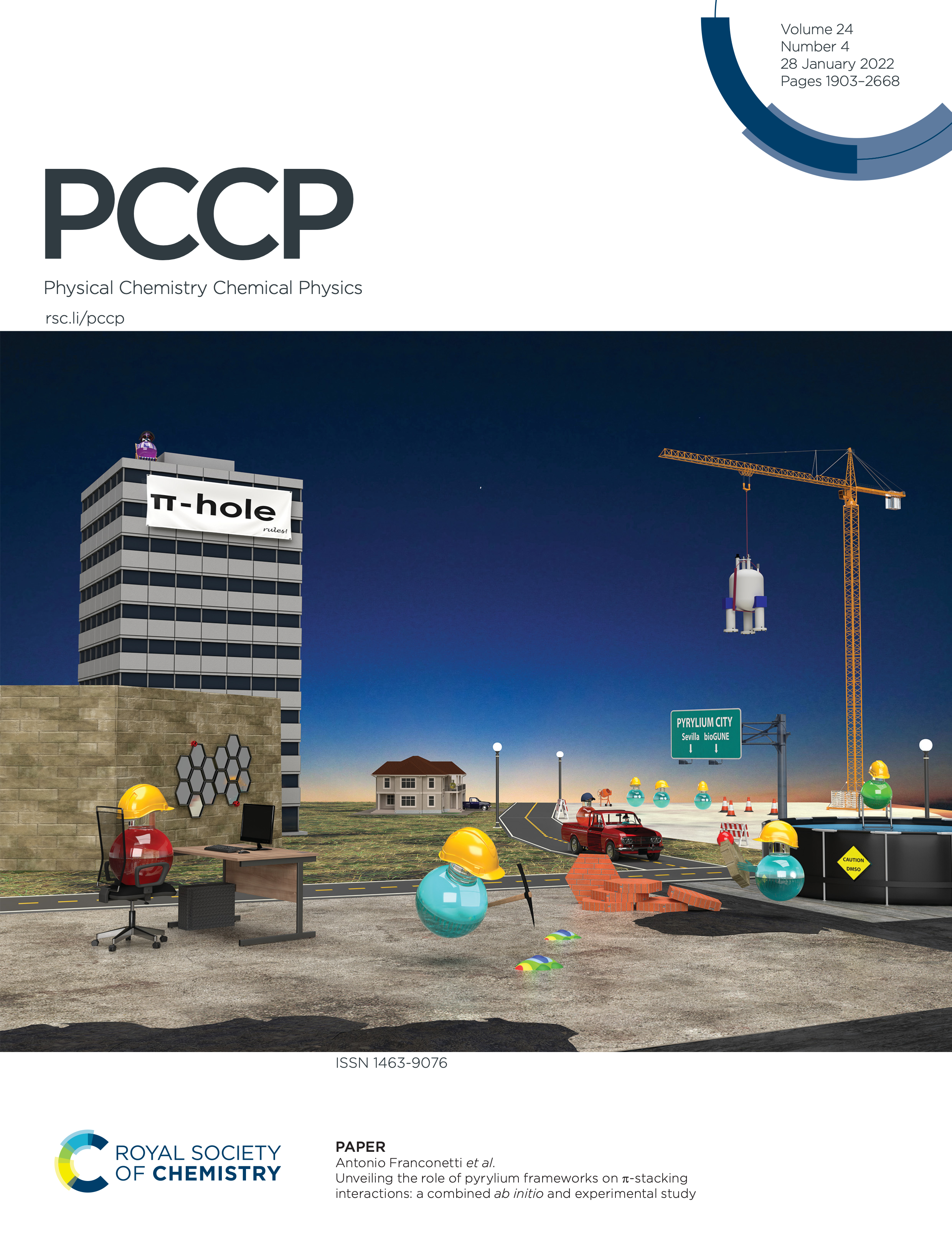 High hydrogen production in the InSe/MoSi2N4 van der Waals heterostructure for overall water splittingYong He, Yao-hui Zhu*, Min Zhang*, Juan Du, Wen-hui Guo, Shi-ming Liu, Chong Tian, Hong-xia Zhong, Xinqiang Wang, and Jun-jie Shi*Phys. Chem. Chem. Phys., May 2022
High hydrogen production in the InSe/MoSi2N4 van der Waals heterostructure for overall water splittingYong He, Yao-hui Zhu*, Min Zhang*, Juan Du, Wen-hui Guo, Shi-ming Liu, Chong Tian, Hong-xia Zhong, Xinqiang Wang, and Jun-jie Shi*Phys. Chem. Chem. Phys., May 2022Very recently, the septuple-atomic-layer MoSi2N4 has been successfully synthesized by a chemical vapor deposition method. However, pristine MoSi2N4 exhibits some shortcomings, including poor visible-light harvesting capability and a low separation rate of photo-excited electron–hole pairs, when it is applied in water splitting to produce hydrogen. Fortunately, we find that MoSi2N4 can be considered as a good co-catalyst to be stacked with InSe forming an efficient heterostructure photocatalyst. Here, the electronic and photocatalytic properties of the two-dimensional (2D) InSe/MoSi2N4 heterostructure have been systematically investigated by density functional theory for the first time. The results demonstrate that 2D InSe/MoSi2N4 has a type-II band alignment with a favourable direct bandgap of 1.61 eV and exhibits suitable band edge positions for overall water splitting. Particularly, 2D InSe/MoSi2N4 has high electron mobility (104 cm2 V−1 s−1) and shows a noticeable optical absorption coefficient (105 cm−1) in the visible-light region of the solar spectrum. These brilliant properties declare that 2D InSe/MoSi2N4 is a potential photocatalyst for overall water splitting.
@article{D1CP04705A, dimensions = {true}, author = {<b>He</b>, <b>Yong</b> and Zhu<sup>*</sup>, Yao-hui and Zhang<sup>*</sup>, Min and Du, Juan and Guo, Wen-hui and Liu, Shi-ming and Tian, Chong and Zhong, Hong-xia and Wang, Xinqiang and Shi<sup>*</sup>, Jun-jie}, title = {High hydrogen production in the InSe/MoSi<sub>2</sub>N<sub>4</sub> van der Waals heterostructure for overall water splitting}, journal = {Phys. Chem. Chem. Phys.}, year = {2022}, volume = {24}, issue = {4}, pages = {2110-2117}, publisher = {The Royal Society of Chemistry}, doi = {10.1039/D1CP04705A}, url = {http://dx.doi.org/10.1039/D1CP04705A}, } - SmallSpontaneous Formation of Lead-Free Cs3Cu2I5 Quantum Dots in Metal–Organic-Frameworks with Deep-Blue EmissionYuqing Zhang, Yong He, Zhenyu Tang, Wenjin Yu, Zehao Zhang, Zhijian Chen, Lixin Xiao, Jun-jie Shi, Shufeng Wang, and Bo Qu*Small, May 2022
Abstract All-inorganic lead-free Cs3Cu2I5 perovskite-derivant quantum dots (QDs) have attracted tremendous attention due to their nontoxicity and unique optoelectronic properties. However, the traditional hot-injection method requires high temperatures and multiple ligands to confine the growth of QDs. Herein, a strategy is reported to spontaneously synthesize ultrasmall Cs3Cu2I5 QDs within metal–organic-frameworks (MOFs) MOF-74 at room temperature (RT) with an average diameter of 4.33 nm. The obtained Cs3Cu2I5 QDs exhibit an evident deep-blue emission with Commission Internationale de L’Eclairage coordinates of (0.17, 0.07), owing to the strong quantum confinement effect. Due to the protection of MOF-74, the Cs3Cu2I5 QDs demonstrate superior stability, and the photoluminescence quantum yield retains 89% of the initial value after the storage of 1440 h under the environment with relative humidity exceeding 70%. Besides, triplet–triplet annihilation upconversion emission is observed within the composite of Cs3Cu2I5@MOF-74, which brings out apparent temperature-dependent photoluminescence. This study reveals a facile method for fabricating ultrasmall lead-free perovskite-derivant QDs at RT without multiple ligands. Besides, the temperature-dependent photoluminescence of Cs3Cu2I5@MOF-74 may open up a new way to develop the applications of temperature sensors or other related optoelectronic devices.
@article{https://doi.org/10.1002/smll.202107161, dimensions = {true}, author = {Zhang, Yuqing and <b>He</b>, <b>Yong</b> and Tang, Zhenyu and Yu, Wenjin and Zhang, Zehao and Chen, Zhijian and Xiao, Lixin and Shi, Jun-jie and Wang, Shufeng and Qu<sup>*</sup>, Bo}, title = {Spontaneous Formation of Lead-Free Cs<sub>3</sub>Cu<sub>2</sub>I<sub>5</sub> Quantum Dots in Metal–Organic-Frameworks with Deep-Blue Emission}, journal = {Small}, volume = {18}, number = {22}, pages = {2107161}, keywords = {Cs<sub>3</sub>Cu<sub>2</sub>I<sub>5</sub>, deep-blue emission, lead-free, metal–organic-frameworks, quantum dots}, doi = {https://doi.org/10.1002/smll.202107161}, url = {https://onlinelibrary.wiley.com/doi/abs/10.1002/smll.202107161}, year = {2022} } - Adv. Sci.Lead-free Double Perovskite Cs2AgIn0.9Bi0.1Cl6 Quantum Dots for White Light-Emitting DiodesYuqing Zhang, Zehao Zhang, Wenjin Yu, Yong He, Zhijian Chen, Lixin Xiao, Jun-jie Shi, Xuan Guo, Shufeng Wang, and Bo Qu*Adv. Sci., May 2022
Abstract Perovskite-based optoelectronic devices have attracted considerable attention owing to their excellent device performances and facile solution processing. However, the toxicity and intrinsic instability of lead-based perovskites have limited their commercial development. Moreover, the provision of an efficient white emission from a single perovskite layer is challenging. Here, novel electrically excited white light-emitting diodes (WLEDs) based on lead-free double perovskite Cs2AgIn0.9Bi0.1Cl6 quantum dots (QDs) without any phosphor are fabricated for the first time. Density functional theory calculations are carried out to clarify the mechanism of absorption and recombination in Cs2AgIn0.9Bi0.1Cl6 with Bi-doping breaking the parity-forbidden transition of the direct bandgap. Microzone optical and electronic characterizations reveal that the broadband emission of Cs2AgIn0.9Bi0.1Cl6 QDs originates from self-trapped excitons, and luminescent properties are unchanged after the film deposition. The QD-WLED exhibits excellent Commission Internationale de L’Eclairage color coordinates, correlated color temperature and relatively high color rendering index of (0.32, 0.32), 6432 K, and 94.5, respectively. The maximum luminance of 158 cd m−2 is achieved by triphenylphosphine oxide passivation, and this lead-free QD-WLED exhibits a superior stability in ambient air with a long T50 ≈48.53 min. Therefore, lead-free perovskite Cs2AgIn0.9Bi0.1Cl6 QDs are promising candidates for use in WLEDs in the future.
@article{https://doi.org/10.1002/advs.202102895, dimensions = {true}, author = {Zhang, Yuqing and Zhang, Zehao and Yu, Wenjin and <b>He</b>, <b>Yong</b> and Chen, Zhijian and Xiao, Lixin and Shi, Jun-jie and Guo, Xuan and Wang, Shufeng and Qu<sup>*</sup>, Bo}, title = {Lead-free Double Perovskite Cs<sub>2</sub>AgIn<sub>0.9</sub>Bi<sub>0.1</sub>Cl<sub>6</sub> Quantum Dots for White Light-Emitting Diodes}, journal = {Adv. Sci.}, volume = {9}, number = {2}, pages = {2102895}, keywords = {double perovskites, electrically excited, lead-free, quantum dots, white light-emitting diodes}, doi = {https://doi.org/10.1002/advs.202102895}, url = {https://onlinelibrary.wiley.com/doi/abs/10.1002/advs.202102895}, year = {2022} }
2019
-
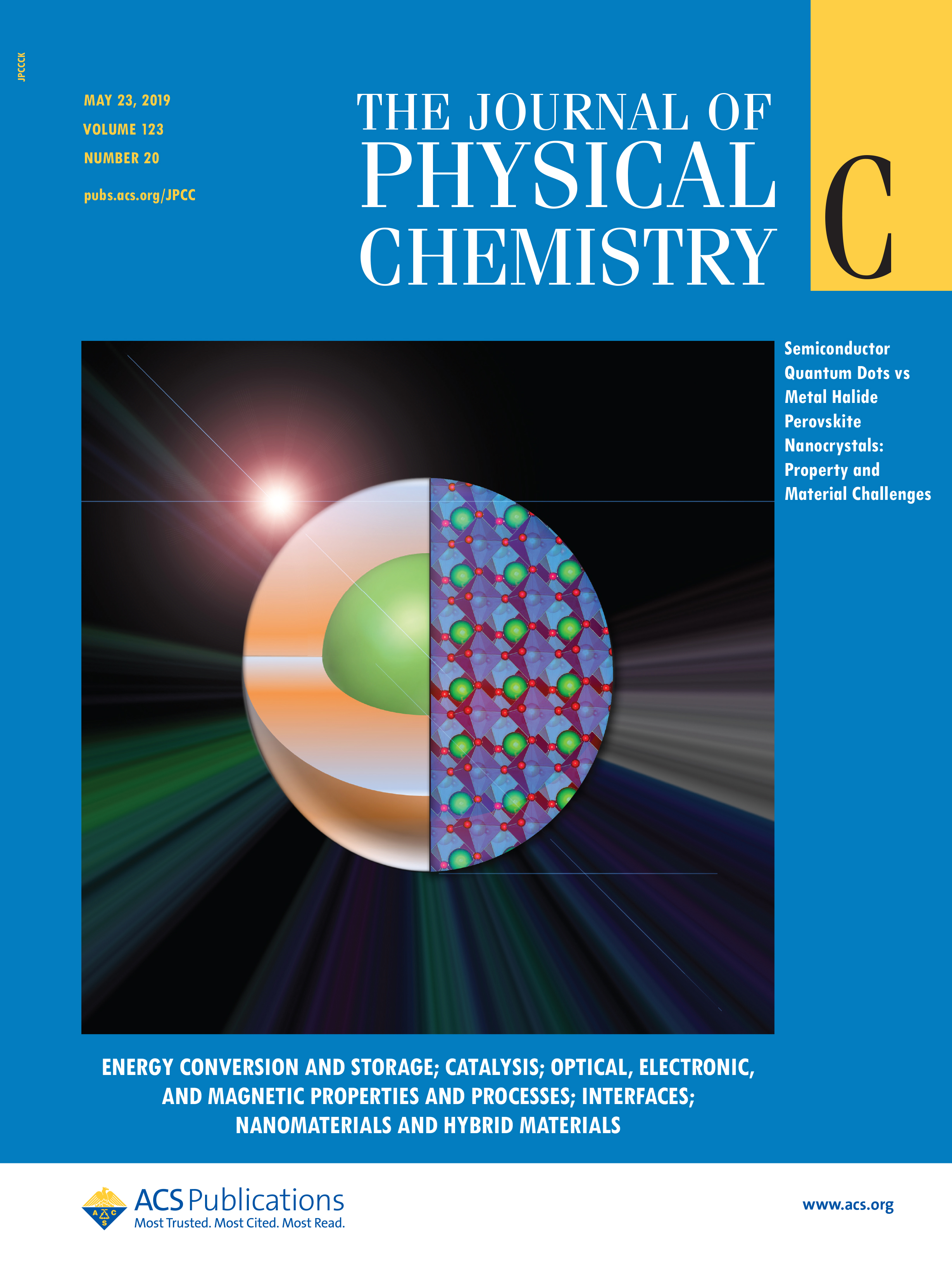 Improvement of Visible-Light Photocatalytic Efficiency in a Novel InSe/Zr2CO2 Heterostructure for Overall Water SplittingYong He, Min Zhang*, Jun-jie Shi*, Yu-lang Cen, and Meng WuJ. Phys. Chem. C, May 2019
Improvement of Visible-Light Photocatalytic Efficiency in a Novel InSe/Zr2CO2 Heterostructure for Overall Water SplittingYong He, Min Zhang*, Jun-jie Shi*, Yu-lang Cen, and Meng WuJ. Phys. Chem. C, May 2019The unexpected visible-light absorption, low recombination of electron–hole pairs, and high carrier mobility are found in a novel two-dimensional (2D) InSe/Zr2CO2 van der Waals heterostructure for overall water splitting photocatalysis. The photocatalytic mechanism has been systematically investigated using first-principles calculations for the first time. We prove that the 2D InSe/Zr2CO2 heterostructure is a robust and promising visible-light photocatalyst with several distinct advantages, as follows. It has a direct band gap of 1.81 eV, which is a more favorable band gap for visible-light photocatalysis. Its type-II band alignment directly leads to a significant electron–hole separation with electrons (holes) localized in the InSe (Zr2CO2) monolayer. The indirect band gap of the InSe (Zr2CO2) monolayer further suppresses the electron–hole recombination in it. Naturally, the recombination of the photogenerated electrons and holes is greatly suppressed in the InSe/Zr2CO2 heterostructure, which improves the solar energy utilization effectively. Moreover, a large optical absorption coefficient (105 cm–1) has been confirmed in the 2D InSe/Zr2CO2 heterostructure with the electron (hole) mobility reaching up to 104 (103) cm2 V–1 s–1, which is highly beneficial and desirable for enhancing its photocatalytic efficiency.
@article{doi:10.1021/acs.jpcc.9b01175, dimensions = {true}, author = {<b>He</b>, <b>Yong</b> and Zhang<sup>*</sup>, Min and Shi<sup>*</sup>, Jun-jie and Cen, Yu-lang and Wu, Meng}, title = {Improvement of Visible-Light Photocatalytic Efficiency in a Novel InSe/Zr<sub>2</sub>CO<sub>2</sub> Heterostructure for Overall Water Splitting}, journal = {J. Phys. Chem. C}, volume = {123}, number = {20}, pages = {12781-12790}, year = {2019}, doi = {10.1021/acs.jpcc.9b01175}, url = {https://doi.org/10.1021/acs.jpcc.9b01175}, eprint = {https://doi.org/10.1021/acs.jpcc.9b01175}, }
2018
-
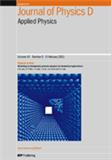 Two-dimensional g-C3N4/InSe heterostructure as a novel visible-light photocatalyst for overall water splitting: a first-principles studyYong He, Min Zhang*, Jun-Jie Shi*, Yao-Hui Zhu, Yu-Lang Cen, Meng Wu, Wen-Hui Guo, and Yi-Min DingJ. Phys. D: Appl. Phys., Oct 2018
Two-dimensional g-C3N4/InSe heterostructure as a novel visible-light photocatalyst for overall water splitting: a first-principles studyYong He, Min Zhang*, Jun-Jie Shi*, Yao-Hui Zhu, Yu-Lang Cen, Meng Wu, Wen-Hui Guo, and Yi-Min DingJ. Phys. D: Appl. Phys., Oct 2018The enhanced visible-light harvesting, low recombination of electron–hole pairs and high carrier mobility are found in a novel g-C3N4/InSe hybrid two-dimensional (2D) heterostructure photocatalyst by using first-principles calculations for the first time. The photocatalytic mechanism of g-C3N4/InSe is comprehensively investigated. Our calculations show that 2D g-C3N4/InSe heterostructure has a direct band gap of 1.93 eV and a typical type-II band alignment with holes and electrons located in metal-free g-C3N4 monolayer and non-noble metal InSe nanosheet, respectively. A remarkable visible-light absorption can thus be expected. The electrons and holes located in InSe and g-C3N4 monolayers have a high mobility (104 and 102 cm2 V–1 s–1), which is beneficial for improving the catalytic efficiency. The charge density difference and type-II band structure indicate that the photo-generated electrons easily transfer from g-C3N4 monolayer to InSe nanosheet, and the holes are transferred from InSe to g-C3N4, reducing the electron–hole recombination. Compared with the well-known 2D g-C3N4/MoS2 hybrid photocatalyst composed of g-C3N4 nanosheet and MoS2 monolayer with a low electron mobility (< 200 cm2 V–1 s–1) and fast electron–hole recombination due to its direct bandgap, g-C3N4/InSe heterostructure photocatalyst has a distinctive advantage in improving the photocatalytic hydrogen evolution performance due to the high carrier mobility and suppressing the recombination of photo-generated electrons and holes by the indirect band gap of InSe monolayer. These clearly prove that g-C3N4/InSe is an energetic photocatalyst for overall water splitting under visible-light irradiation.
@article{He_2019, dimensions = {true}, doi = {10.1088/1361-6463/aae67d}, url = {https://dx.doi.org/10.1088/1361-6463/aae67d}, year = {2018}, month = oct, publisher = {IOP Publishing}, volume = {52}, number = {1}, pages = {015304}, author = {<b>He</b>, <b>Yong</b> and Zhang<sup>*</sup>, Min and Shi<sup>*</sup>, Jun-Jie and Zhu, Yao-Hui and Cen, Yu-Lang and Wu, Meng and Guo, Wen-Hui and Ding, Yi-Min}, title = {Two-dimensional g-C<sub>3</sub>N<sub>4</sub>/InSe heterostructure as a novel visible-light photocatalyst for overall water splitting: a first-principles study}, journal = {J. Phys. D: Appl. Phys.} }